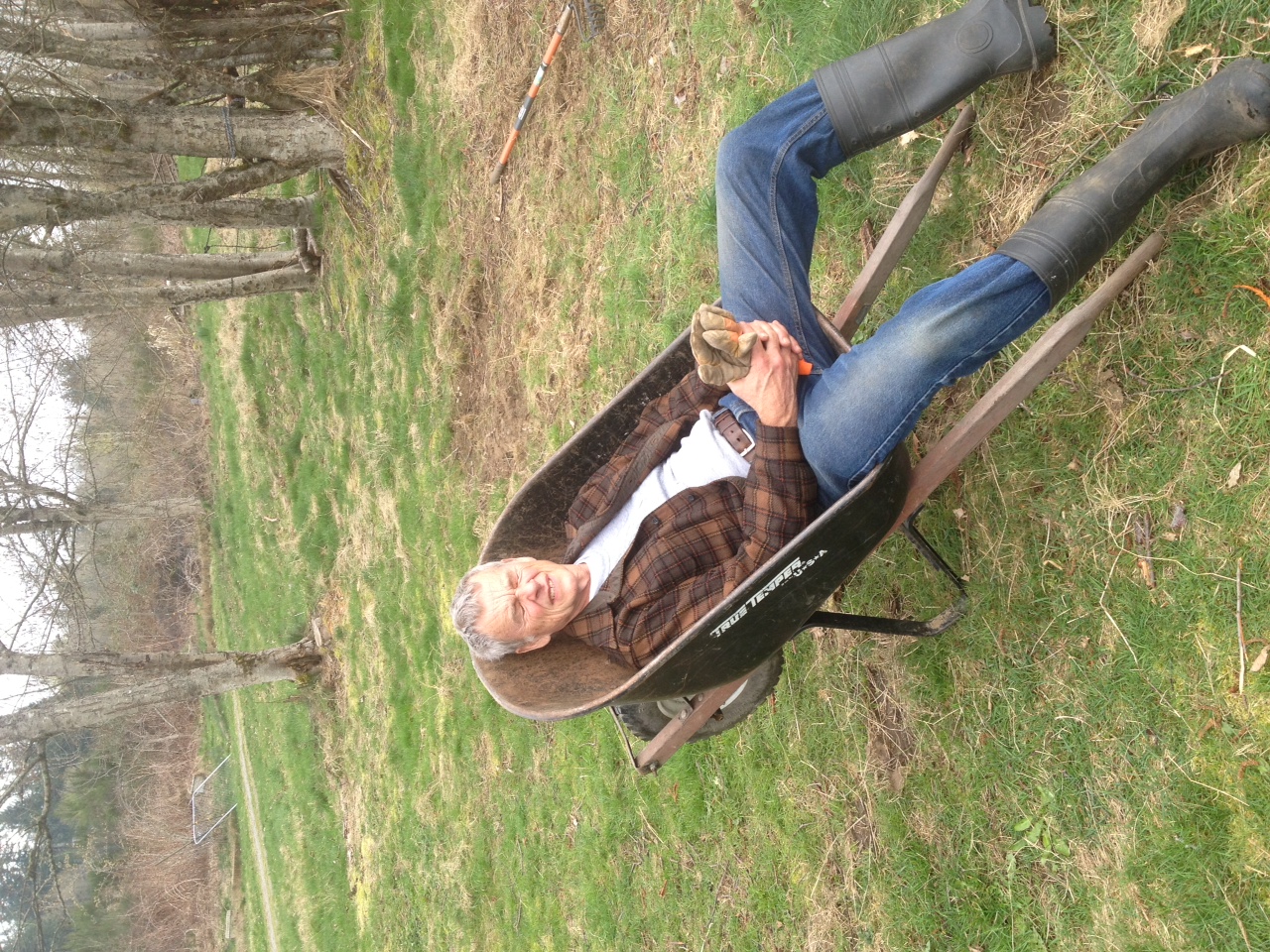Continuing Story
- Ken Campbell

- Mar 4, 2022
- 4 min read
20 February 2022

Earlier in this blog, I posted what I called “A Little Story” about a Sharp-shinned hawk hunting a Towhee in the twiggy entanglement of a virescence in the plum tree near the bird feeder. The virescence provided escape cover for a towhee as it fled from the hawk that made an attack on the bird feeder. The towhee found safety because it could maneuver through the virescence’s dense twigs while the hawk couldn’t penetrate beyond the perimeter of this ball-shaped growth. The virescence is an oft-used safety station for towhees but it is not the closest escape cover for birds at the feeder.
The closest safe cover is at the base of a near-bye leaning pear tree which is surrounded by a small clumped tangle of dry grass, suckers, loose blackberry runners, and broken limbs. Towhees use this cover routinely as they sally forth to feed briefly under the seed dispensers and then quickly return to the entanglements at the base of the pear tree for safety and to survey the feeding area for danger. This is done over and over again until the towhee is satiated and flies off to another spot. (The virescence and the pear tree entanglement and the way towhees use them is illustrated in Clip #1 of the previous post: “A Little Story”)
Here, I continue the story told in the previous post with a new episode.
Today, a Cooper’s hawk made a run at the bird feeder. All the birds at the feeder - juncos, chickadees, finches, towhees, and song sparrows - escaped with two of the towhees taking cover in the entanglement at the base of the pear tree. The Cooper’s hawk must have seen them go there because it took a perch on a broken limb that protruded out of the entanglement. Essentially, the hawk was sitting right on top of the towhees.
After a brief while, the hawk decided to roust out the towhees. It hopped down to the ground and began to walk around the tangle. The following picture sequence captures some of the moments of the hawk’s search.
.
The last picture in this sequence nicely shows the Cooper’s Hawk’s long legs. Because these hawks often chase their prey into thick cover which they cannot readily enter, they capture their prey by reaching into the tangle with their long legs, sinking their talons into the victim, and dragging it out. Thus, evolution has bestowed on these bird-eating hawks relatively long legs compared to other hawks which capture their prey in more open situations.
The Cooper’s hawk didn’t capture either of the towhees that were at the feeder this morning. Soon after the above photos were taken, it flew off into the alders and cottonwoods on the north end of the farm and was not seen again on this day.
However, three days later, I looked out the window just as I was sitting down at my desk to see the Cooper’s Hawk come rapidly into the bird feeder on a low flight path from the north. This angle of attack caught the birds at the feeder by surprise and the towhee’s path to the close cover at the base of the pear tree was blocked by the hawk. The towhee made a frantic attempt to get to the second spot of cover, i.e., the virescence in the plum tree. Too late; the hawk gave chase and at their high speed, even the towhee could not pass through the perimeter into dense twigs of the interior of the virescence. It had to swerve to go around to the back and in this instant of changing direction coupled with the hawk’s superb maneuverability, the hawk nailed the towhee in midair. The hawk carried the towhee off to the trees on the north end of the farm where it ate it.
Within 30 seconds after the hawk had gone, the birds, including another two towhees, were back at the feeder. The towhees were already running the drill of sallying forth from the pear tree entanglement to the feeding area under the dispensers and, then, quickly retreating to the entanglement where they surveyed the feeding area before repeating the maneuver over and over again. If one were to observe the feeding behavior of these birds at the feeder 30 seconds before the hawk attack and then observe it again 30 seconds after the attack, one would be hard-pressed to distinguish any difference in the bird’s behavior. Nature’s trials and tragedies hardly disrupt bird life at all. If the birds emerge from the ordeal unscathed, their life goes on as before. These daily events get worked into normal living because that is the way things are.
As I pointed out in the earlier post, life is never very far removed from death on the farm. Farm animals accept this and go on living. Their experiences with life and death constitute little stories that occur daily. I see some of these little stories and write them down. Maybe one day I will accumulate a sufficient number to piece together the bigger story of life and death on the farm.






Comments